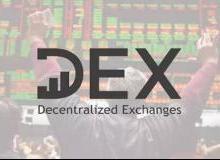Integral: Another Solution to Improve AMM Capital Efficiency | DeFi Hunter
This article is an original piece by Chain Catcher, author: Echo, editor: Gong Quanyu.
How to improve capital efficiency in AMM mechanisms and reduce impermanent loss is one of the most discussed issues in the DeFi industry recently, and many AMM projects have been exploring related solutions.
Uniswap recently launched V3 to address this issue, allowing liquidity providers to choose a custom price range when providing liquidity, concentrating funds in areas with higher trading volumes to improve capital utilization; DODO proposed the PMM active market maker mechanism, introducing oracle prices to concentrate liquidity near market prices, providing better liquidity and higher capital efficiency.
Integral is another AMM project proposing such solutions. Integral officially launched in April this year, with early funding mainly coming from Gitcoin donations, completing a $32 million seed round token public offering at the end of April. The project team remains anonymous, with advisors including Compound founder Robert Leshner, Framework Ventures founders Michael and Vance, and Polychain Capital founder Olaf Carlson-Wee.
Stimulated by the liquidity mining program, Integral's total locked value peaked at over $600 million in mid-April, currently falling back to $79.84 million, with a cumulative number of interacting addresses at 1,415.
Regarding capital efficiency, Integral proposed a new OB-AMM mechanism, aiming to provide a decentralized trading platform with the best trading depth, liquidity, and lowest fees, while almost eliminating impermanent loss.
According to official information, Integral's solution is to snapshot and replicate the depth of other major exchanges, with its LPs providing liquidity at a standard of 3 times that of Binance and 1 time that of Uniswap in specific price ranges. This essentially separates depth from capital, allowing the same depth to be achieved with less capital.
Through this mechanism, to provide liquidity at the same level as other exchanges, Integral only needs 1/10 of the asset scale. With the same trading volume, the fees earned by Integral LPs have an APY that is 10 times that of LPs from other exchanges.
At the same time, Integral also introduced a delayed trading mechanism to avoid impermanent loss. Generally, impermanent loss occurs due to traders with certain profitability (arbitrageurs, front-runners, etc.), whose trades lead to losses for LPs. Integral's solution is to arrange trades within that time interval every 5 minutes, using the 5-minute average price from Uniswap for unified settlement through oracles, meaning arbitrageurs will not be able to obtain certain profits in a timely manner, thus opting out of trading on the platform, avoiding impermanent loss for LPs.
To achieve concentrated liquidity, Integral's pool ratio will fluctuate around 50%/50% periodically, meaning there will be periodic imbalances, but it will always be limited between 40% and 60%. This means that as long as the time is long enough, LPs are likely to see the pool ratio return to the initial ratio.
Currently, Integral has indicated that it will issue the ITGR token in the near future, with a total supply of 300 million tokens, of which 40% will be used for liquidity mining, 25% allocated to founders and the team, 25% allocated to seed round participants, 5% allocated to advisors and investors, and 5% as a listing supply pool. Based on Integral's public round financing price, the diluted market value of this token reaches approximately $300 million.









